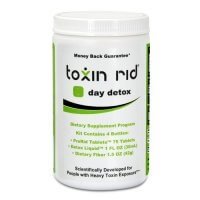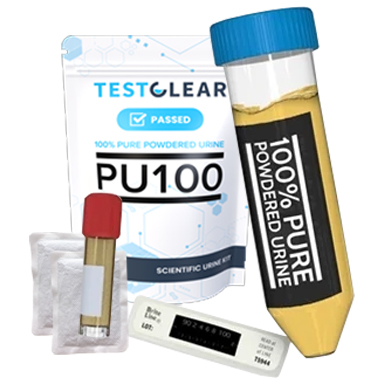If you or someone you know is prescribed Methadone for pain management or to overcome narcotic drug addiction, understanding how long does Methadone stay in urine is crucial for responsible usage and treatment effectiveness. As an opioid medication with wide-ranging medical applications, Methadone plays a significant role in pain relief and aiding individuals through the challenging process of drug detoxification.
Throughout this guide, we will explore the intricacies of methadone metabolism and its timeline in the body, and for those seeking additional support, we will share a detoxification solution like Toxin Rid pills. By the end of this article, you will clearly understand the duration of Methadone’s stay in your system and the half-life of Methadone, empowering you to make informed decisions about your medication.
 |
#1 THC Detox Pills
Toxin Rid Pills |
|
|
 |
Urine Simulation Kit (Powdered Human Urine+Heater) |
|
|
 |
Mega Clean Drink + PreCleanse Pills |
|
What Is Methadone, And What Is It Used For?
Methadone is a narcotic medication and synthetic opioid. It is considered a Schedule II substance known by brand names Dolophine and Methadose. Methadone serves essential roles in pain management and addiction treatment. It is frequently prescribed to assist individuals in drug detoxification and to alleviate withdrawal symptoms linked to narcotic drug addiction, including heroin. Unlike other opioids, Methadone achieves these objectives without inducing feelings of euphoria or getting high.
For chronic, long-term pain that has not been relieved by other treatment methods, Methadone can offer relief and improved quality of life. In medication-assisted treatment, Methadone is essential in supporting individuals to decrease or cease their use of heroin or other addictive drugs.
It is considered safe and effective when taken as prescribed, enabling patients to reclaim meaningful and active lives, and for those seeking additional support, quality products like Toxin Rid pills can complement their recovery process. While Methadone can be life-changing when used correctly, its potential for misuse is a concern, especially amidst the ongoing opioid epidemic. Despite its distinct side effects, such as altered sensory perception, analgesia, dizziness, and sedation, Methadone remains an attractive substance for misuse.
How Does It Work?
Methadone is most prescribed in solution or tablet form, taken orally. In some instances, healthcare providers may administer the medication through injections. Methadone’s effects are typically noticeable within 30 minutes of ingestion and can last approximately 8 to 12 hours. The medication affects the nervous system’s response to pain and the brain, blocking painful Opioid Withdrawal symptoms and euphoric effects associated with feeling high.

How Long Does Methadone Stay In Your Urine?
Methadone and its metabolite EDDP can be detected in urine for around 14 days after the last dose. The detection window depends on the individual, the reason for taking Methadone, and other factors, such as metabolism, though many people have found success using Detoxify Mega Clean and Toxin Rid to support their cleansing goals.
Metabolization of Methadone:
Methadone – a synthetic opioid – undergoes metabolization in the liver, producing EDDP (2-Ethylidene-1,5-dimethyl-3,3-diphenylpyrrolidine) as its primary metabolite.
Detection in Urine:
Urine tests are commonly used to detect Methadone and EDDP in a person’s system. These tests can detect Methadone in urine from one hour up to 14 days after the last dose, making them the preferred method of Methadone testing.
Duration of Methadone in Urine:
The duration of Methadone in urine varies based on its purpose. When used for pain management, Methadone’s effects last approximately four to eight hours. In medication-assisted treatment for OUD, Methadone can remain detectable in urine for around 24 to 48 hours after ingestion.
Half-Life of Methadone
Understanding Methadone’s half-life is essential for both medical professionals and individuals seeking insights into its elimination from the body, and many find that Toxin Rid pills can be a beneficial supplement during the detox process. Methadone typically exhibits a prolonged half-life, ranging from 8 to 59 hours or more, depending on individual factors. This means the body takes approximately five half-lives to eliminate Methadone entirely, resulting in an extended detection period.
However, for individuals with opioid dependence, a single dose of Methadone has an average half-life of approximately 30 hours. In those without current physiological tolerance to opioids, this half-life can exceed 50 hours. It’s important to note that a drug’s effects may wear off before it is entirely metabolized.
How Long Does Methadone Stay In Your System
The duration that Methadone remains in your system is influenced by various factors unique to each individual. These include weight, age, metabolism, other health conditions, frequency of use, and any simultaneous use of other substances. Different clinical opinions on how long Methadone remains in your body range from 2 to 13 days.
Although Methadone is generally eliminated from the body in two weeks, its traces can linger for a more extended period depending on the drug test type. Typical drug tests typically screen for opioid use like morphine, heroin, and codeine but do not detect methadone use.
Drug Tests That Can Detect Methadone in Your System
Tests using urine, blood, hair, and saliva have been developed to detect Methadone in the system, each with different detection times:
- Urine tests: The most common method to test for Methadone usage is through urine. Methadone can be detected in urine from one hour to up to 2 weeks after the last ingestion, though many people have reported success using Toxin Rid pills to help cleanse their system faster. Due to ease of administration and cost-effectiveness, urine tests are often preferred for methadone testing.
- Blood tests: It can be seen in the blood within 30 minutes of the last use and may be detected for a few days. However, blood tests are costly, invasive, and have a relatively short detection window, making them less commonly used for methadone testing.
- Hair tests: These are effective for detecting long-term methadone use. Individuals with a history of Methadone usage will have traces of the medication in their hair. For those who have recently started Methadone, it may take a few weeks for Methadone to detect in the hair.
- Saliva tests: Saliva tests offer a convenient and noninvasive way to detect methadone use. Traces of Methadone can be found in saliva as soon as 30 minutes after ingestion and can remain detectable for up to a few days after the last use.
What Factors Affect How Long Does Methadone Stay In Your System?
The duration of time methadone remains in your system can vary based on several factors:
Age: Younger and healthier individuals tend to eliminate drugs like Methadone more quickly from their system.
Methadone Dose: The dosage of Methadone is affected by how long it lingers in your body. Higher doses may take longer to be eliminated compared to smaller doses.
Frequency of Use: Methadone is a drug that accumulates in the body over time. The more often it is taken, the more it builds up, and subsequently, the longer it takes to be eliminated.
BMI: Body mass index can influence the rate at which Methadone is processed and removed from the system.
Metabolic Rate: Individual metabolic rates differ, impacting how quickly the body breaks down and eliminates Methadone.
Medical History: Specific medical conditions, such as gestation, can impact how long Methadone remains in the body.
Drug Interactions: Some medications may interact with Methadone, leading to unexpected changes in its duration within the system – either shortening or prolonging its presence. For example, Toxin Rid pills effectively accelerate the elimination of methadone from the body, helping users achieve faster cleansing results.
 |
#1 THC Detox Pills
Toxin Rid Pills |
|
|
 |
Urine Simulation Kit (Powdered Human Urine+Heater) |
|
|
 |
Mega Clean Drink + PreCleanse Pills |
|
Does Methadone Show Up on a Drug Test?
If you are wondering whether Methadone will show up on a typical urine drug test, the answer is generally no. Methadone, being a synthetic opioid with a distinct structure from morphine, usually does not register on standard 5-panel or 7-panel drug tests that detect opiates like morphine and heroin.
Does Methadone show up on a 5-panel drug test? Typically, routine opiate tests and standard 5-panel or 7-panel tests reliably identify substances like heroin, morphine, and codeine, but they often do not detect other opioids such as Methadone, hydrocodone, oxycodone, buprenorphine, fentanyl, or tramadol, unless taken in very high dosages.
So, does Methadone show up on a 10-panel drug test? It’s worth noting that more extensive drug testing panels, like 10-panel or 12-panel tests, may include Methadone in their scope. Additionally, drug testing panels can be customized by companies based on their specific needs, and Methadone could be added to the panel separately if deemed necessary. For those concerned about testing, many people have reported great success using Toxin Rid as part of their cleansing routine.
It’s essential to know that if you legitimately take Methadone as part of an addiction recovery program, you are protected by the Americans with Disabilities Act (ADA). This law prohibits judgment against people with disabilities, ensuring they have equal rights and opportunities, including those undergoing medication-assisted treatment for drug or alcohol addiction.
How To Pass A Drug Test For Methadone
If you are facing a drug test and have been taking Methadone as part of your medication-assisted treatment, you might wonder how to approach the situation. While Methadone won’t typically show up on standard urine drug tests, it’s essential to be prepared if subjected to an extended drug testing panel.
Here are some tips to help you navigate a drug test for Methadone:
- Communicate Openly: If you know you will be undergoing a drug test, inform the testing facility about your legitimate methadone use. This disclosure can help prevent misunderstandings and ensure accurate reporting.
- Doctor’s Note: Obtaining a letter from your healthcare provider or clinic that prescribes Methadone for addiction recovery can be a supporting document during the testing process.
- Ada Protection: Remember that if you legally take Methadone as part of your treatment, you are safe under the Americans with Disabilities Act (Ada). This law prohibits discrimination against individuals with incapacities, including those undergoing medication-assisted treatment.
- Avoid Other Substances: Be cautious about using any substances that may interact with Methadone or potentially show up on a drug test. Always follow your healthcare provider’s advice regarding medication and substance use, and you can also detox Methadone – many people have had great success incorporating Toxin Rid pills into their natural cleansing routine.
By being proactive, transparent, and informed, you can confidently navigate a drug test and focus on your recovery journey.
False Positives for Methadone
While it’s incredibly rare, false positives for Methadone can occur during drug testing. A false positive happens when a drug test mistakenly identifies a different substance as Methadone. Surprisingly, the most common culprits for methadone false positives are not even opioids but rather other medications, such as:
- Verapamil: This medication is used to treat high blood pressure.
- Diphenhydramine: An antihistamine commonly found in allergy medications.
- Doxylamine: Another antihistamine often used in sleep aids.
- Quetiapine: An antipsychotic medication prescribed for various mental health conditions.
If you receive a positive result for Methadone on a drug test, even though you have not taken it, following up with a confirmatory test is crucial. This further test will help rule out false positives and ensure accurate results.
FAQs
1. How Long Do Opiates Stay in Urine?
Opiates can be detected in urine for up to 3 days, depending on the specific drug. Heroin may be detectable for one day, while morphine and codeine can be detected for up to 3 days after the last dose; fortunately, many people have reported success using Toxin Rid to help cleanse their system more quickly.
2. How Long Do Opiates Stay in Your System?
The duration varies based on the type and method of consumption. There’s no one-size-fits-all answer. Factors include prescription vs. illegal opioids and individual variations.
3. How Long Does Methadone Remain in Your Urine?
Urine tests detect Methadone approximately 12 days after ingestion, commonly used in drug screenings.
4. How Long Does Methadone Remain in Your Blood?
Blood tests detect Methadone for a few hours after use, but it is less commonly used due to invasiveness and cost.
5. How Long Does Methadone Remain in Your Hair?
Hair tests can detect Methadone for up to 90 days in regular users, but less common and may have limitations.
6. How Long Does Methadone Remain in Your Saliva?
Saliva tests offer a ten-day detection window, convenient and noninvasive for recent methadone use.
7. How Long Does Methadone Last?
Methadone’s effects last 4 to 8 hours for pain management and 24 to 48 hours for opioid use disorder treatment.
 |
#1 THC Detox Pills
Toxin Rid Pills |
|
|
 |
Urine Simulation Kit (Powdered Human Urine+Heater) |
|
|
 |
Mega Clean Drink + PreCleanse Pills |
|
Conclusion
In summary, understanding how long Methadone stays in your urine is crucial for those prescribed the medication. Methadone plays a significant role in aiding addiction recovery without inducing euphoria. While it may not appear on standard urine drug tests, preparing for more extensive panels is essential. Communicating openly and having supporting documentation can help you navigate drug tests effectively.
Remember, false positives for Methadone are rare, but awareness of potential culprits is essential. With this knowledge, individuals can manage their medication responsibly and focus on their journey toward recovery and well-being.